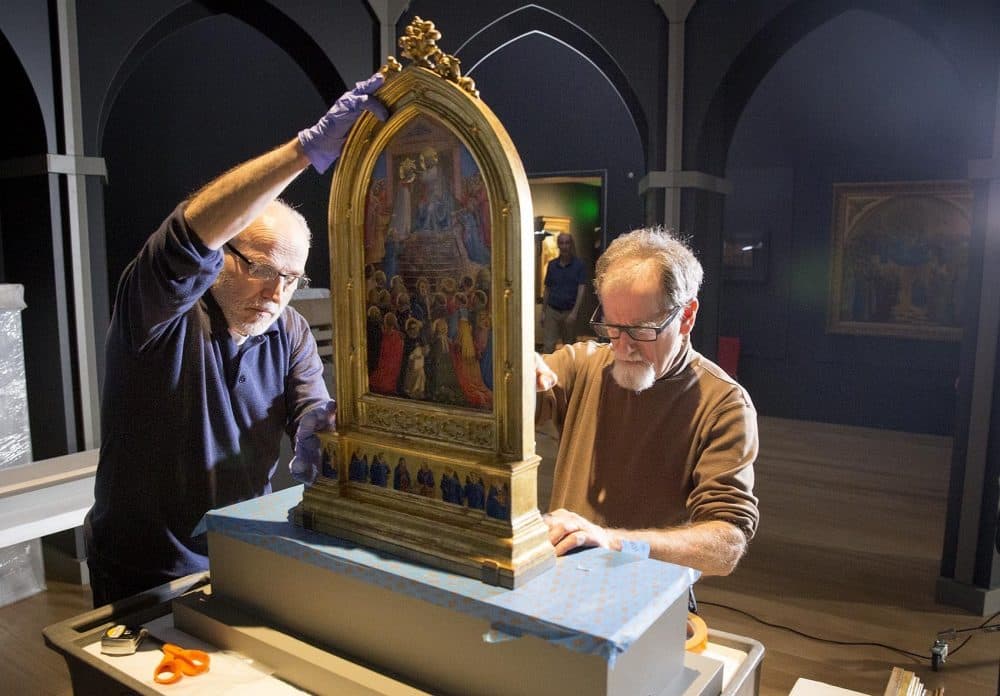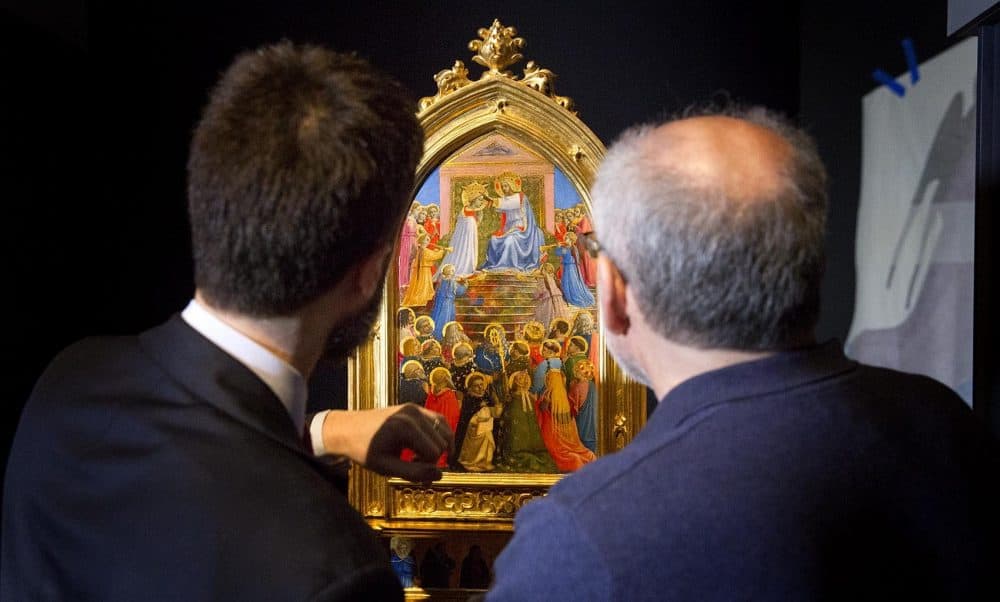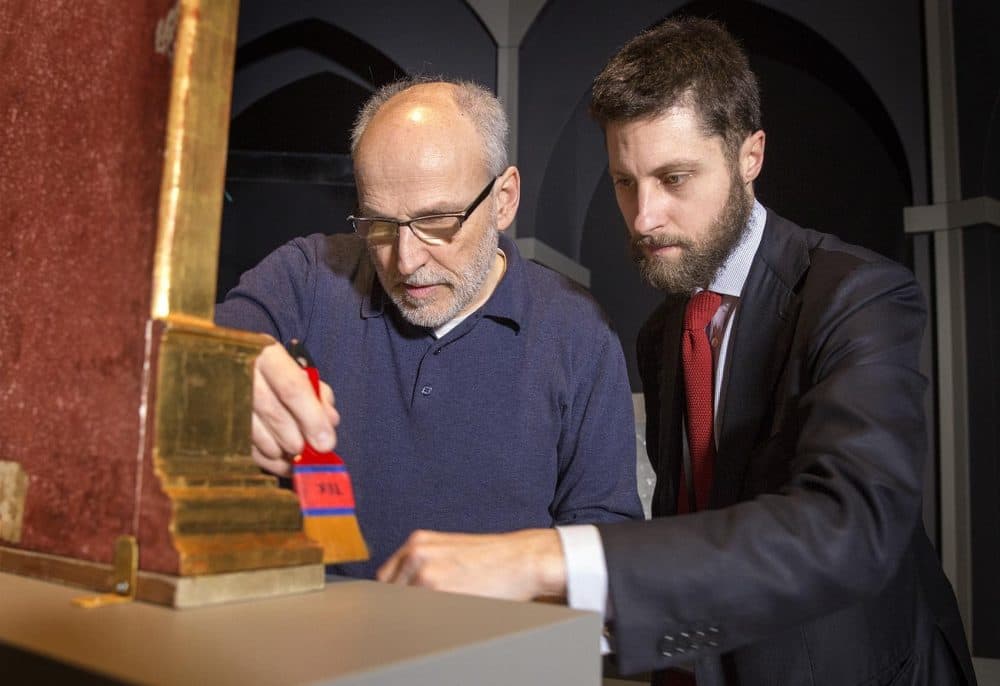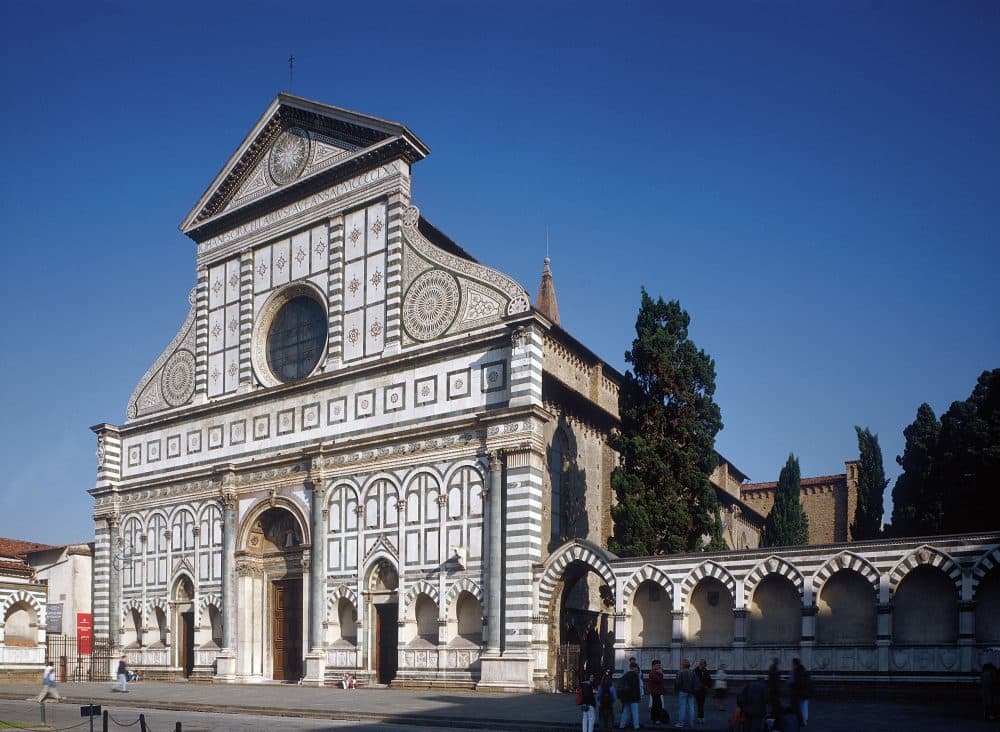Advertisement
Rare Italian Renaissance Masterpieces That Held Relics Of Saints Are Reunited At The Gardner

The Isabella Stewart Gardner Museum in Boston is highlighting some unusual, masterworks created by the brilliant artist Fra Angelico during the early Italian Renaissance. The reliquaries, as they're called, were made to hold holy relics — small fragments and tokens from the bodies of saints and martyrs. For example, the pinky bones of popes.
Now, after being separated for two centuries, three rare, sacred reliquaries traveled from Florence to Boston to reunite with a fourth, which the Gardner Museum owns.
The tradition of preserving the physical remains of revered dead people goes way back. It's been practiced through the ages by a long list of religions including Hinduism, Buddhism and — in the case of the artworks now at the Gardner Museum -- Roman Catholicism.
“So relics — whether they're pieces of skin or strands of hair or fragments of bone — tend to be pretty invisible,” Gardner curator Nat Silver explained to me on a very busy day at the museum.

He acknowledged the "ick" reaction people not familiar with these sacred tokens could have. In the church, holy relics were often tucked away in an ornate container or in tiny chambers attached to a sacred painting called a reliquary.
“It's effectively a gift box that highlights, that advertises and that presents its contents in a vivid and exciting way,” Silver said.
Three precious, 15th century reliquaries from the Museum of San Marco in Florence were delicately unpacked and installed in the Gardner's gallery for an unprecedented exhibition. The relics they once held are long gone — they were removed before the reliquaries left the church. But the reframed, freestanding shrine paintings are still eye popping.
Under bright work lights, Silver and a triage team of tense but excited museum staff hovered around a colorful, gilded piece of art as they prepared it for mounting.

“This is like the operating room,” Amanda Venezia, the Gardner's head registrar, said as she looked on nervously. “You know, it's a very delicate process, and we have a lot of best practice procedures that we employ when we do this work — and so we get a little twitchy,” Venezia added with a laugh.
It’s Venezia’s job to arrange and oversee the reliquaries’ travel, safety and condition. She said their arrival has been like a religious experience.
“When we opened this reliquary — you know — it moves you,” she reflected. “It's amazing to be in the presence of such beauty and pieces of history. It’s one of the most special parts of what we do.”
The reliquaries were painted between 1424 and 1434 by Fra Angelico, a celebrated 20-something artist and devout friar in the Dominican Order of the Catholic Church. At that time Florence was exploding with magnificent buildings and artworks, and he was asked to paint for two popes, the powerful Medici family and the city's elite.
Advertisement
Florence's Santa Maria Novella, a Dominican church, commissioned Fra Angelico to work on these reliquaries for its sacristy where treasures like gold chalices, sculptures and relics were kept.
The installation’s design for the new show, “Fra Angelico: Heaven on Earth,” is even inspired by Santa Maria Novella’s architecture and atmosphere.

The three reliquaries from Florence are part of a quartet that was broken apart. Eventually, Isabella Stewart Gardner’s astute art agent Bernard Berenson found it for her. Silver said the reliquary painting has long been one of the museum’s crown jewels.
“When Gardner bought it in 1899 it was the first for Fra Angelico in America and it really kicked off a trend,” he said. “If you were a major museum at the time you suddenly had to have a work by this painter.”
Institutions that followed Gardner’s lead include the Museum of Fine Arts, Boston, Harvard's Fogg Museum, the Metropolitan Museum of Art in New York City and the National Gallery of Art in Washington, D.C.
“So Gardner, again, comes off as a pioneer,” Silver added.
Turns out Isabella Stewart Gardner had her own trove of relics from contemporary celebrity artists she admired.
"She collects strands of Nathaniel Hawthorne's hair," Silver explained. "She picks up a cigarette butt that Brahms has been smoking, puts it in an envelope and labels it for posterity."
These are on display in a complimentary exhibition called “Isabella’s Relics.”
“We wanted to show with these two exhibitions that this is a practice that continues from the Middle Ages and the Renaissance to the present,” Silver said.
Seen together, the four Fra Angelico reliquaries are able to tell the full story of the life of the Virgin Mary — from her annunciation to her coronation in heaven. Fra Angelico activated the narrative with vivid colors, textures and sacred imagery.

In the Gardner Museum’s reliquary, we see the Virgin’s death and her ascent into heaven. She’s surrounded by a vortex of angels.
Chief conservator Gianfranco Pocobene is thrilled the newly restored historic paintings are being reunited and said it’s fascinating to spend time looking at the four of them together.
“And because they've had different histories they have a somewhat different appearance,” he explained. “Ours for example is not varnished, and so its surface is somewhat different from these, which had received varnishes. But all of them appear to be in spectacular condition. I mean, they're really well-preserved objects.”
Museum of San Marco director Marilena Tamassia escorted the three precious Fra Angelicos on their trip to Boston from Florence. With a laugh she said, “It’s a very important, special occasion to see them all together because they were born together.”
Tamassia said it’s emotional also to know the people of Boston will have this rare opportunity, “and I hope they will love to see them together.” She noted how much brighter the gold and colors are in the works since they were cleaned and restored for this special exhibition. "Before they were a little dusty, not so expressive, not so intense," she said.
The Italian museum director also hopes the Boston exhibition will inspire the curious to visit the Museum of San Marco in Florence so they can see the more than 100 Fra Angelico paintings — especially his frescoes that can’t be lent to other institutions. San Marco houses the largest collection of Fra Angelico works in the world.

The Gardner Museum's Nat Silver said he hopes visitors will be "as impressed as the Pope was in 1434 when he walked into the sacristy at Santa Maria Novella and was surrounded by all of these little glimpses of heaven."
This reunion in Boston ends on May 20, but there’s been some musing about sending the Gardner Museum's Fra Angelico reliquary to Florence for another get together.
The reliquaries are part of the exhibition "Fra Angelico: Heaven on Earth" at the Gardner Museum through May 20.
